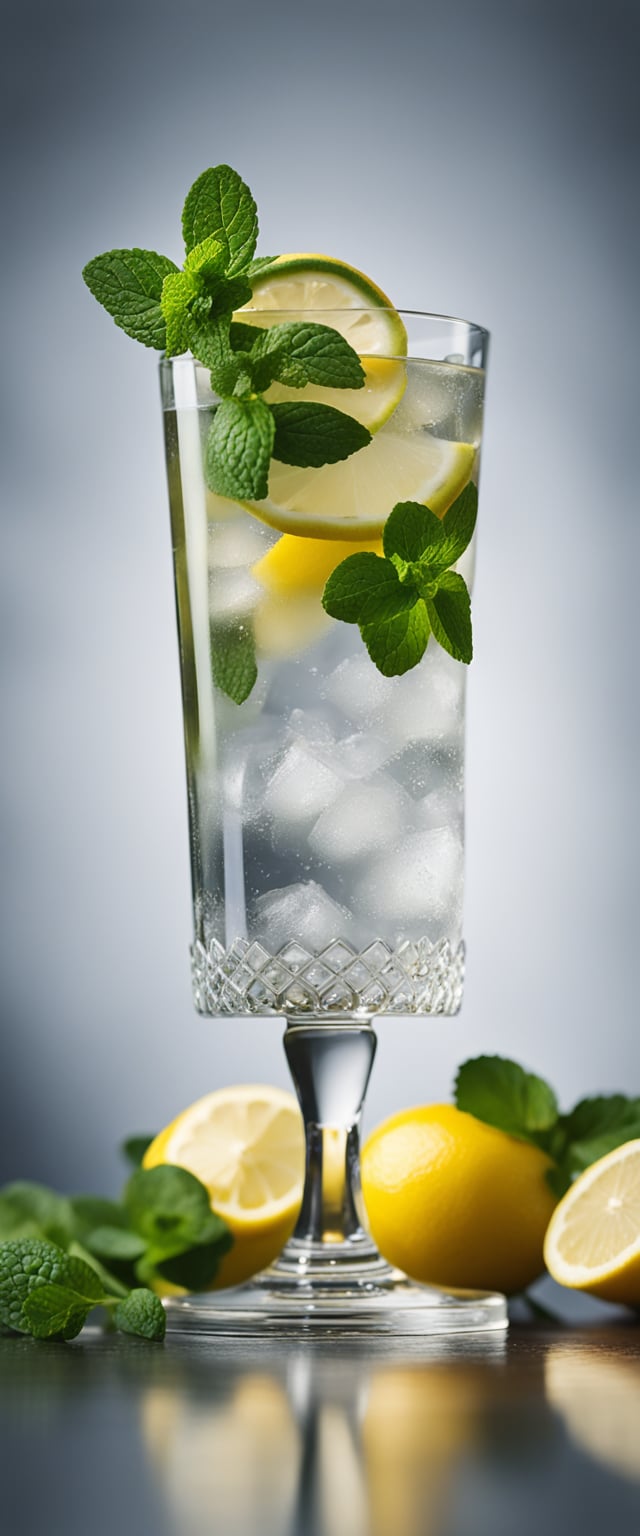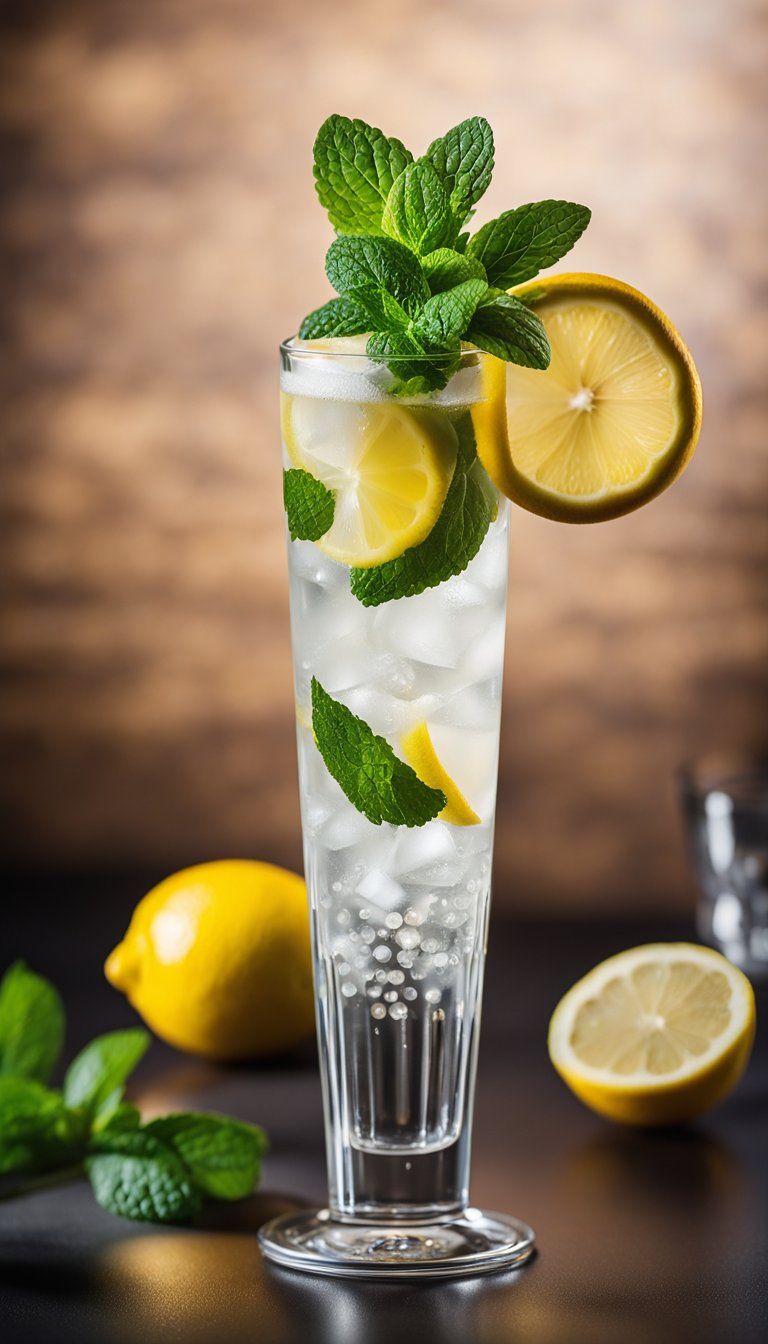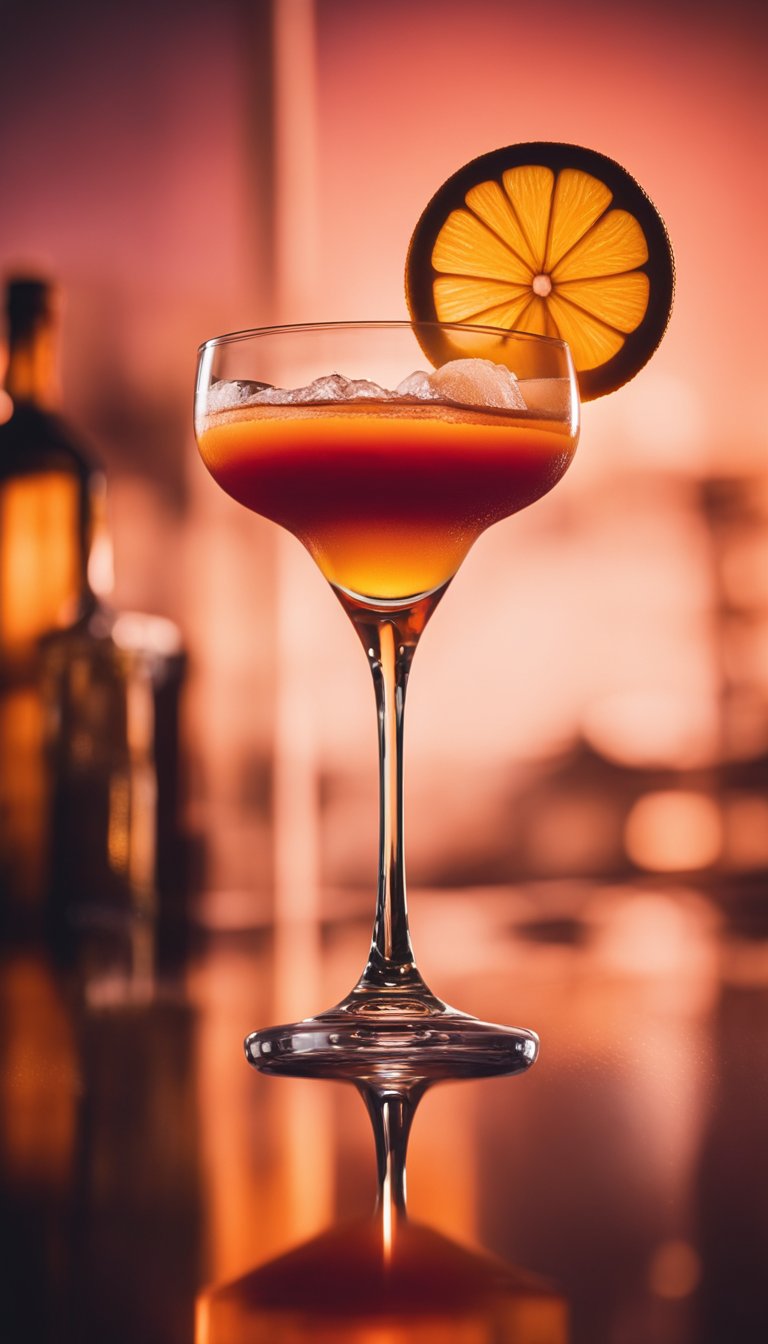In the ever-changing world of drinks, a new contender is now the center of attention – alcohol-free spirits. These new concoctions have gained a significant amount of traction in recent years, as people increasingly seeking alcohol-free alternatives. This comprehensive study we will explore the spirit market that is alcohol-free, looking at the current state and growth trends within the EU and UK. Get ready to embark upon a journey into this exciting area.
The soaring popularity of alcohol-free Spirits
The Numbers Don’t Make a Murder
In the beginning, let’s take one moment to realize the scale of this growing market. In the EU and UK, the demand for spirits that are alcohol-free has been increasing. The market is valued at an astounding X billion, and experts predict it will continue its upwards trend, and will reach a billion by 2025.
Consumer Preferences Redefined
What is the reason for this astronomical rise? The main reason is the changing preferences of consumers. A growing concern about health and more mindful drinking have driven people to seek alternatives to the traditional alcoholic drinks. Alcohol-free spirits have emerged as a clear choice to meet these new expectations.
A peek into the Brands
In this crowded market, various companies have made huge progress. Names like “Spirito” and “Elixiria” have seized market share through their varied varieties of alcohol-free spirits. Spirito’s floral botanical blends as well as Elixiria’s juices that are fruit-infused have become household names, testament to their ability to make appealing alternatives.
Navigating through Regulatory Seas
The Rules of the Game
Before diving deeper into the waters, it’s essential to understand the legal waters surrounding alcohol-free spirits. For the EU and UK the products are subjected to specific laws which differentiate them from traditional alcohol beverages. Knowing these regulations is essential to businesses in this area.
The Composition of Labels and the Language
One important aspect of regulation refers to the labeling of and composition. Alcohol-free spirits must clearly indicate their alcohol content. It is usually not exceeding 0.5 percent ABV (alcohol percent by volume). Following these guidelines will ensure the transparency of consumers and allows them to make educated choices.
Marketing and branding
Additionally, the marketing and branding of alcohol-free spirits need to be careful not to confuse consumers. Find a way to present something as an alternative to alcoholic spirits and distinguishing it as a product that is unique is crucial.
After having a good grasp of the regulatory and market issues, let’s go deeper into the realm of non-alcoholic spirits. In the next section, we’ll examine the fascinating trends in the market as well as emerging patterns that are shaping this dynamic sector. Begin this journey of the latest innovations, health awareness as well as the exciting future of alcohol-free spirits.
A Sip of Innovation: New Trends in the Non-Alcohol Spirit Market
We’ve laid the basis for understanding the alcohol free spirit market’s current state now, let’s focus our attention toward the future. In this section in this section, we’ll be taking a deep look at the new trends that are shaping and shaping the EU and UK and UK alcohol-free spirit markets. Fasten your seatbelts as we travel to the forefront of technology, sustainability, and evolving consumer preferences.
Innovation and innovation are the main focus
Beyond the Mocktail
The days of simple mocktails are long gone. Another of the more intriguing trends that has emerged in the market for alcohol-free spirits is the continuous in search of innovative ideas. These brands push the limits of flavor profiles by utilizing exotic botanicals, and employing cutting-edge distillation techniques to craft spirit that is alcohol-free and comparable to alcohol-based counterparts.
Aromatic Complexity
At the forefront of this are brands such as “AromaCraft” along with “InfiniFlavor,” known for their intricate flavor profiles. From the smoky aroma of aged whiskey to the bright citrus flavor of gin inspired spirits, these products showcase the art of alcohol-free spirit making.
The Development of Limited Editions
Another exciting aspect of the new technology is the appearance of limited-edition alcohol-free spirits. Brands are experimenting with seasonal releases, and collaborating with well-known mixologists, and mixing exotic ingredients to create exciting and buzz-worthy products.
Sustainability and Eco-friendly Choices
From Field to Bottle
With consumers becoming increasingly conscious of the environment it has become a central theme in the alcohol-free spirit market. There are brands that place an emphasis on responsible sourcing of ingredients and eco-friendly packaging. “EcoSip” as well as “GreenHarvest” are two examples of companies that are committed to sustainability. They utilize organic, ethically-sourced products and recyclable packaging.
Reduced carbon footprints
In the fight against carbon emissions, reducing footprints is a crucial issue. Certain brands are embracing carbon neutral production processes, offsetting emissions, and using environmentally responsible methods. These are initiatives that resonate with consumers looking for products that align with their beliefs.
In order to meet the varied needs of the consumer
It’s a Spectrum of Choices
One of the amazing aspects of the alcohol-free spirit market is the ability be able to meet the needs of a range of different consumers demands. There is no longer a universally-fits-all scenario. Companies recognize that consumers have different preferences in their taste and dietary restrictions.
Sugar-Free, Gluten Free, and beyond
Gluten-free, sugar-free and allergen-free alcohol-free spirits are now easily available. Brands such as “PureTaste” and “FreeFlow” are experts in the production of spirits that are tailored to specific food preferences, ensuring everyone is a part of the alcohol-free flavor.
As we navigate the modern waters and research the sustainability of the spirit market that is alcohol-free, it’s evident that this business is growing quickly in response to consumer demand. But the story doesn’t close here. In the next chapter we’ll take a look at consumer behaviors that are guiding the course in this marketplace. Get ready to navigate through the many facets of consumer behavior and their preferences.
Direct From Source to Success: Boost Your Inventory with Swedish Distillers’ Non-Alcoholic Spirits!
Confronting Consumer Behavior: Understanding Consumer Preferences and Trends
Through our exploration of the ever-changing landscape of alcohol-free spirits, we’ve examined the marketplace’s current state as well as marveled at the ingenuous developments. Now, it’s time for us to focus our attention on the key factor behind this shift in the industry: consumer behavior. Knowing what consumers are looking for and the way they make their choices is crucial for companies looking to succeed within the EU and UK alcohol-free spirits market.
The Multifaceted Consumer
The Health-conscious Consumer
One of the more prominent changes in the behavior of consumers is the rise in awareness of health. Many people have embraced alcohol-free spirits as a means of enjoying the joy of a cocktail without the detrimental health consequences of alcohol. The majority of them are focused on their health and well-being for both their bodies and minds and are often drawn to spirits that have organic ingredients and health benefits.
the Culinary Explorer
The market for alcohol-free spirits is also drawing culinary enthusiasts who appreciate mixing the art of mixology. They want complex flavors and unique blended botanicals that enrich their drinking experience. For them, alcohol-free spirits are an ideal canvas for experimentation with cocktails.
It is the Social Connector
Humans, as social beings, tend to interact with others. Alcohol-free people have their place in the crowd of those who wish to be a part of gatherings that are not influenced by alcohol’s influence. The segment is a fan of the social aspect of drinking and the ability to enjoy refined drinks without hangover.
Consumer Behavior Trends
Web Discovery, and Purchasing
The digital age has altered the way people discover and purchase alcohol-free drinks. Online platforms, from ecommerce sites along with social networks play an integral role in shaping consumer choices. Brands that effectively leverage the internet for marketing and business are more likely to succeed.
Transparency as well as Authenticity
The public is demanding transparency from brands. They need to know where their ingredients come from and how the products are created and what values the brand stands for. Integrity and the commitment to environmentally sustainable practices are highly sought-after by today’s shoppers.
The Role in Reviews as well as Recommendations
Reviews and suggestions, whether from friends or online influencers hold significant weight when it comes to the alcohol-free spirit market. Positive testimonials and expert endorsements can influence consumer decision-making. Brands should engage their customers and solicit honest feedback.
Sustainability as an important driver
Sustainability is no longer a niche concern as it is now a central driver of consumer behaviour. Brands that are eco-friendly and show social responsibility are in a position for a surge in sales from consumers who agree with these values.
What’s to come
While we navigate the tangled waters of consumer behavior trends there is no doubt that the market for alcohol-free spirits is not just about what’s in the bottle but about the meaning and value it represents. In the next section this article, we’ll outline the strategies and tactics brands use to meet diverse consumer demands. You should be prepared to explore the strategies that are bringing brands to the forefront of this ever-changing industry.
Crafting Success: Strategies to Brands that are Alcohol-Free
In the ever-changing world of spirit-based drinks that don’t contain alcohol, manufacturers are creating stories of success by understanding consumers’ habits and taking advantage of emerging trends. With consumers searching for healthy, sophisticated, and more connected with their social networks, alcohol-free spirit brands need to employ the appropriate strategies in order to stand out in the marketplace. In this article we’ll look at the strategies which the top brands are using and guide you on a path to thriving in the EU and UK market for alcohol-free spirits.
Strategy 1: Diverse Flavor Profiles
Bold and Different Botanicals
Brands with a strong reputation are developing sophisticated flavor profiles that cater to a variety of tastes. They’re employing a wide range of botanicals, each chosen for their unique contribution to the overall taste experience. This means that customers will find alcohol-free spirits which are a good fit for their tastes and preferences, whether it’s that is refreshing and citrusy or rich and spicy.
Limited Editions and Seasonal Releases
Intriguing limited editions and seasonal releases generate interest and anticipation in consumers. Special releases may showcase unique flavor combinations or honor certain ingredients of the season, offering reasons for customers to test something new.
Strategy 2: Collaborations and Mixology
Collaborations Mixologists
Collaboration with well-known mixologists is an effective marketing strategy for businesses. Mixologists can develop signature cocktails and recipes that highlight the distinctive flavor of an alcohol-free spirit. Their knowledge and experience adds credibility to the brand and opens up new avenues of mixology.
Cocktail Recipe Collections
Many of the top alcohol-free spirits brands provide consumers with cocktail recipes. The collections encourage the imagination of consumers and inspire them to experiment with various mixers, garnishes and presentation styles. Sharing these recipes via sites and social media can increase branding engagement.
Strategy 3: Sustainable and eco-friendly Strategies
Sustainable Sourcing
There is a growing trend of brands adopting sustainable practices, such as sourcing organically grown plants to reducing their carbon footprint. Consumers are drawn to brands which are concerned about the environment, making sustainability a key selling element.
Eco-Friendly Packaging
Eco-friendly packaging is a different trend that is popular with environmentally-conscious consumers. Companies are looking at innovative packages that’s biodegradable, recyclable and even reusable. Eco-friendly, attractive packaging can make a brand stand out both on the shelves and the minds of customers.
4. Strategy: Engaging with Communities
Online Communities
Successful brands foster online communities for consumers to connect, share experiences, and exchange ideas. These communities are a place for drinkers to discuss recipes reviews, as well as creative uses of alcohol-free spirits.
The Consumer’s Feedback as well as Iteration
Brands constantly look for and respond to feedback from customers. This approach is a way for brands to improve their products flavors, flavor profiles, and marketing strategies in response to real-world feedback. It also displays a dedication to satisfy the needs of customers.
Strategy 5: Innovative Marketing
Storytelling and Brand Values
Effective storytelling helps brands communicate with customers on a higher level. Brands are sharing their story beliefs, values, and their commitment to sustainability and wellness. They employ storytelling in order to communicate the authenticity of their brand and its personality.
Influcer Partnerships
Collaborations between influencers who align with the brand’s core values and intended audience can enhance the reach of a brand. Influencers tend to create compelling material that showcases a brand’s products in a variety of contexts.
What’s Next
While we explore the strategies that are behind the success of the non-alcoholic spirit market today, we’re prepared to explore the final section of our research for a peek into the future. In the next part we’ll examine the crystal ball to examine the predictions and trends which will likely shape future developments in the EU and UK alcohol-free spirit market in the next few years.
The future of alcohol-free Spirits with Predictions and Trends
As we close our trek into the realm of spirits that are alcohol free, we gaze towards our future, taking a look at the latest trends and predictions which could change this EU and UK alcohol-free spirit market over the next decade. The journey has been enlightening with us navigating through various aspects of the burgeoning market, from its inception to the strategies that leading brands are employing for success. Let’s now embark on an exploration of the future.
A Revolution in Alcohol-Free Spirit continues
New Formulations
The market for alcohol-free spirits is expected to experience a flurry of innovative formulations. Brands will push the boundaries and experiment with exotic botanicals, novel flavor profiles, and imaginative methods to duplicate the depth and complexity of alcohol-based spirits. Expect to find spirits that are a bit different from the norm and entice the taste buds.
Health and Wellness Integration
The rising interest of consumers for healthy living and well-being will drive the development of alcohol-free spirits that offer functional benefits. The brands will infuse their drinks using adaptogens, vitamin, and other components that are health-enhancing. These spirits won’t just provide a healthy alternative to alcohol but also cater to customers looking for beverages that can aid their overall health.
Personalized Experiences
Personalization will be a key aspect. Companies will utilize technology to create customized alcohol-free spirit experiences. From customizable flavor profiles, to customized cocktail recommendations that can be ordered on demand, customers will enjoy more control over their drinks than they have ever had before.
The Sustainability Movement is Taking Center Stage
Circular Economy Practices
Sustainability will be a constant issue. Brands will employ circular economy principles, ensuring that the production process minimizes waste and the environmental impact. The production, sourcing, and packaging will be created with environmental sustainability in the forefront, while appealing to environmentally conscious consumers.
Carbon-Neutral Spirits
Brands are committed to achieving carbon neutrality. It is a way to offset the carbon emissions created during the entire life cycle of a product. Carbon-neutral spirits attract consumers who are concerned about climate change and the environment.
The Rise of E-Commerce and DTC Models
Direct-to-Consumer (DTC) Dominance
The e-commerce as well as DTC models will continue to flourish. Alcohol-free spirit brands will invest into user-friendly online platforms, making it easier for consumers to learn about, purchase and engage with their products directly. The ease of DTC shopping will fuel the market to expand.
Virtual Tastings and experiences
Virtual tastings and immersive online experiences will become commonplace. Brands will be hosting virtual events, allowing consumers to discover their products from at the convenience of their homes. These experiences will enhance consumer connection and encourage brand loyalty.
Regulative Changes, Acceptance and Acceptance
Clearer Labeling Standards
Organising bodies for regulation will establish higher standards for the labeling of alcohol free spirits. This will help increase transparency, helping consumers make informed choices. Standardized terms will remove confusion about alcohol content.
Larger Use
Alcohol-free spirits will get more acceptance in restaurants, bars and other social venues. Mixologists will integrate them into their menus, providing more non-alcoholic drinks. The stigma of abstaining drinking alcohol will go away.
A Recap of Our Journey
As we bring our exploration to the EU and UK alcohol-free spirit market to an end we’ll take a moment for a recap of the interesting journey we’ve embarked on:
-
Affirming the Value of Market It began by having a deep understanding of the market for alcohol-free spirits, its history, and its rapid growth.
-
Making Success Strategies We examined the strategies employed by successful brands, which include many flavor profiles, collaborations sustainable, community engagement and creative marketing.
-
The Future Awaits: In this article, we’ve looked into the crystal ball, and explored the trends and predictions that will determine the future in this highly competitive sector.
In conclusion In conclusion, what we have found is that EU and UK the market for alcohol-free spirits is currently on the rise, driven by sustainable development, innovation and the changing preferences of consumers. Companies that take note of these trends and change to the ever-changing landscape can be successful in this fast-growing market.
We thank you for being part of us along this path. As we look towards our future with alcohol-free spirit, may your glasses be filled with the unlimited possibilities this incredible industry has to offer.










